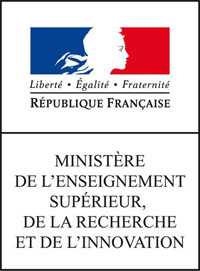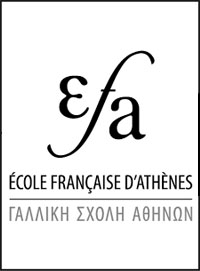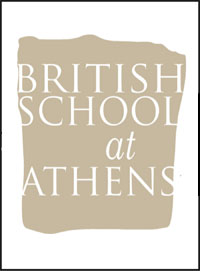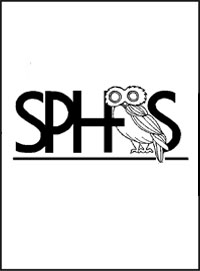Samos - West Area of Samos Archaeological Project - 2023
Informations Générales
Numéro de la notice
19618
Année de l'opération
2023
Chronologie
Mots-clés
Nature de l'opération
Institution(s)
Localisation
Toponyme
Marathokambos
Marathokambos
Notices et opérations liées
Description
Michael Loy (Cambridge), Anastasia Christophilopoulou (Cambridge) and Naoíse Mac Sweeney (Vienna) report on the third season of the West Area of Samos Archaeological Project’s five-year research programme.
Work this year focused on intensively exploring the Karlovasi basin in the northwest of Samos island (Fig. 1,2). Five weeks were devoted to fieldwalking, with two weeks of ceramics study and ethnographic work already having taken place early in the year.
Intensive field walking of 50 x 50m grids took place between 28th August and 29th September, covering 4.80km2 spread across 833 individual walker tracts. Two strategies were employed throughout the season. First, long test-transects were walked in the area bounded by the villages of Hydroussa and Kontakeiika and by the river Fourniotiko, with more intensive walking conducted at those points on the transects indicative of hotspots. Second, areas were walked with complete coverage that had been suggested as possible points of interest through ethnographic survey and local knowledge, in the regions of Xirokampos, Agios Nikolaos, Vryses, and Hydroussa (Fig. 3).
In total 38,919 sherds of pottery were counted, with 2,267 collected as diagnostic feature sherds. The density of pottery scatters was used to identify up to 18 possible Areas of Interest (AOIs) (Fig. 4): many of these areas yielded predominantly Early Byzantine pottery, notably with many fewer transport amphoras but more tablewares than had been found in southwest Samos in 2022. Of particular interest for the first millennium BC are the AOIs HK-10 (a trough located between two gentle hills, eroding much Hellenistic and Roman pottery) and Vrys-1 (Hellenistic and Roman material found on a cultivated plain behind the hamlet of Vryses). Worked ashlar blocks, possibly ancient, were located at the AOIs X-1, X-2 and X-3. While preliminary work and ethnographic interviews had suggested that similar structures would be found at Agios Nikolaos, above Xirokampos and at Hydroussa, such features were otherwise absent in the landscape. Few pieces of Archaic and Classical pottery were found this year, for the most part interpreted as those that had been washed down by the Fourniotiko river; sherds of this period were not found in enough number to constitute a whole AOI.
Barely any transport amphoras that date earlier than the Early Byzantine period were found this year. By contrast, the majority of first millennium sherds were table wares. From Xirokampos, the diagnostics were predominantly Late Roman and Early Byzantine, with a few pieces of black-glaze found right by the coast. At Agios Nikolaos, there were early-modern sherds, with some pieces dating as late as the twentieth century. From the Hydroussa-Kontakeiika test transects, most of the ceramics were Roman or Hellenistic, with the Hellenistic material concentrated towards the west side of the region. The southwest of the region (close to the river) also yielded some pieces of Archaic date. Most pieces appear to have been locally manufactured in south Ionia. These trends remain first impressions, and may change when the material is studied intensively in 2024.
108 Points of Interest (POIs) were registered in extensive survey this year, bringing the total number in the database to 288 (Fig. 5). Most of the POIs registered were either built structures (39, including both walls and partial or whole buildings) and clusters (14, mainly ceramics, but also concentrations of rocks). In addition, there were eight wells registered, and four points noted for terracing features and four for of paths. Large number of POIs (24) were registered this year in the ‘landscape’ category, mainly noting points of interest undertaken during exploratory hikes through the landscape.
Work this year focused on intensively exploring the Karlovasi basin in the northwest of Samos island (Fig. 1,2). Five weeks were devoted to fieldwalking, with two weeks of ceramics study and ethnographic work already having taken place early in the year.
Intensive field walking of 50 x 50m grids took place between 28th August and 29th September, covering 4.80km2 spread across 833 individual walker tracts. Two strategies were employed throughout the season. First, long test-transects were walked in the area bounded by the villages of Hydroussa and Kontakeiika and by the river Fourniotiko, with more intensive walking conducted at those points on the transects indicative of hotspots. Second, areas were walked with complete coverage that had been suggested as possible points of interest through ethnographic survey and local knowledge, in the regions of Xirokampos, Agios Nikolaos, Vryses, and Hydroussa (Fig. 3).
In total 38,919 sherds of pottery were counted, with 2,267 collected as diagnostic feature sherds. The density of pottery scatters was used to identify up to 18 possible Areas of Interest (AOIs) (Fig. 4): many of these areas yielded predominantly Early Byzantine pottery, notably with many fewer transport amphoras but more tablewares than had been found in southwest Samos in 2022. Of particular interest for the first millennium BC are the AOIs HK-10 (a trough located between two gentle hills, eroding much Hellenistic and Roman pottery) and Vrys-1 (Hellenistic and Roman material found on a cultivated plain behind the hamlet of Vryses). Worked ashlar blocks, possibly ancient, were located at the AOIs X-1, X-2 and X-3. While preliminary work and ethnographic interviews had suggested that similar structures would be found at Agios Nikolaos, above Xirokampos and at Hydroussa, such features were otherwise absent in the landscape. Few pieces of Archaic and Classical pottery were found this year, for the most part interpreted as those that had been washed down by the Fourniotiko river; sherds of this period were not found in enough number to constitute a whole AOI.
Barely any transport amphoras that date earlier than the Early Byzantine period were found this year. By contrast, the majority of first millennium sherds were table wares. From Xirokampos, the diagnostics were predominantly Late Roman and Early Byzantine, with a few pieces of black-glaze found right by the coast. At Agios Nikolaos, there were early-modern sherds, with some pieces dating as late as the twentieth century. From the Hydroussa-Kontakeiika test transects, most of the ceramics were Roman or Hellenistic, with the Hellenistic material concentrated towards the west side of the region. The southwest of the region (close to the river) also yielded some pieces of Archaic date. Most pieces appear to have been locally manufactured in south Ionia. These trends remain first impressions, and may change when the material is studied intensively in 2024.
108 Points of Interest (POIs) were registered in extensive survey this year, bringing the total number in the database to 288 (Fig. 5). Most of the POIs registered were either built structures (39, including both walls and partial or whole buildings) and clusters (14, mainly ceramics, but also concentrations of rocks). In addition, there were eight wells registered, and four points noted for terracing features and four for of paths. Large number of POIs (24) were registered this year in the ‘landscape’ category, mainly noting points of interest undertaken during exploratory hikes through the landscape.
Auteur de la notice
Georgios Mouratidis
Références bibliographiques
Unpublished field report.
Légende graphique :
![]() localisation de la fouille/de l'opération
localisation de la fouille/de l'opération
![]() localisation du toponyme
localisation du toponyme
![]() polygone du toponyme Chronique
polygone du toponyme Chronique
Fonctionnalités de la carte :
![]() sélectionner un autre fond de plan
sélectionner un autre fond de plan
![]() se rapprocher ou s'éloigner de la zone
se rapprocher ou s'éloigner de la zone
![]() afficher la carte en plein écran
afficher la carte en plein écran
Date de création
2024-08-05 07:07:31
Dernière modification
2024-08-08 07:55:09
Figure(s)
Fig. 3/ Map of places mentioned in the text. The area investigated in intensive field survey is marked in transparency















